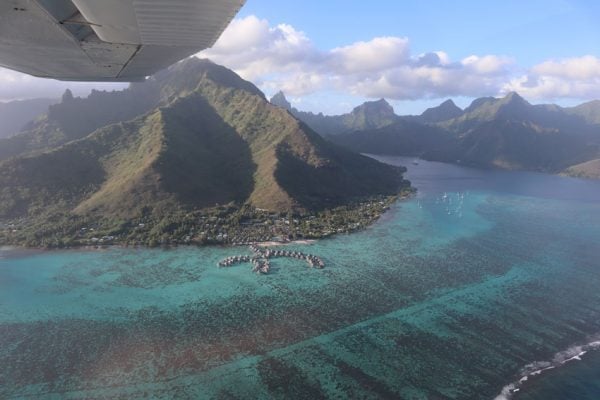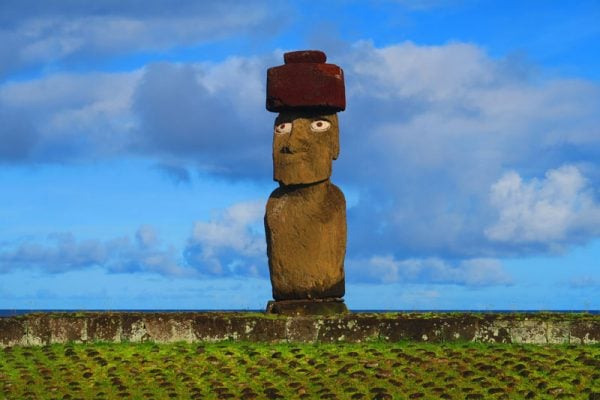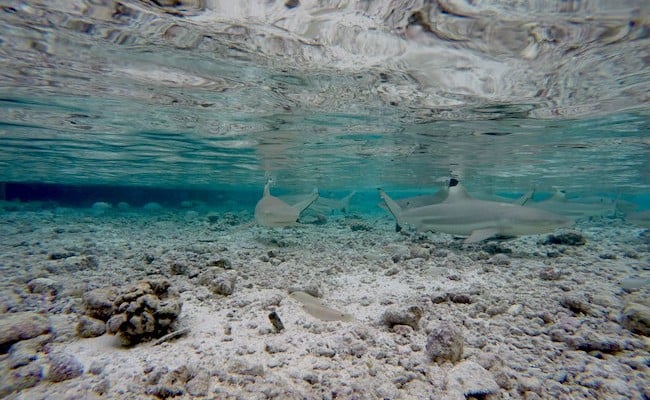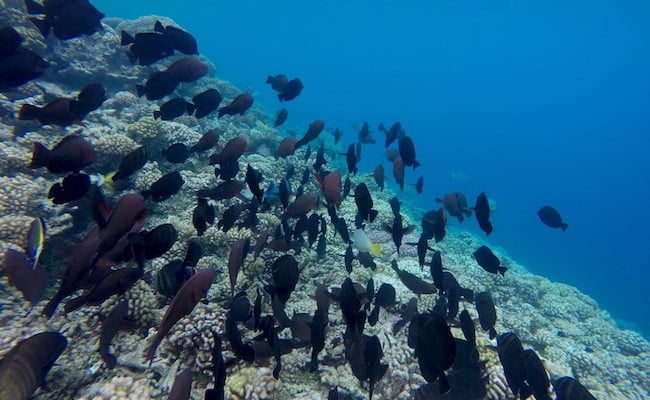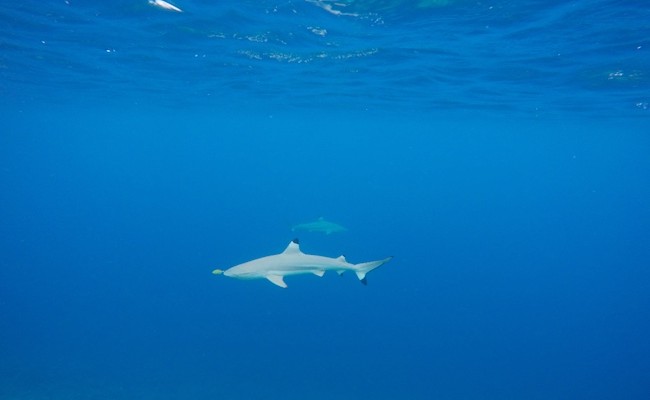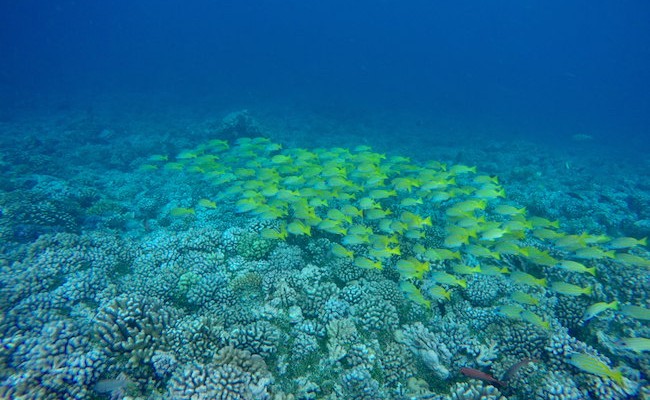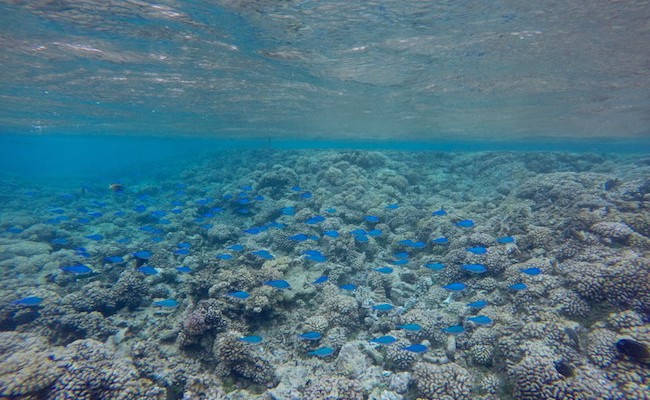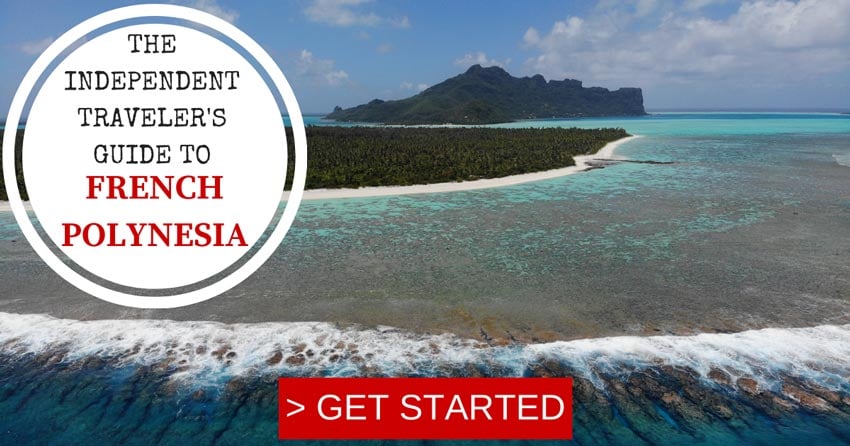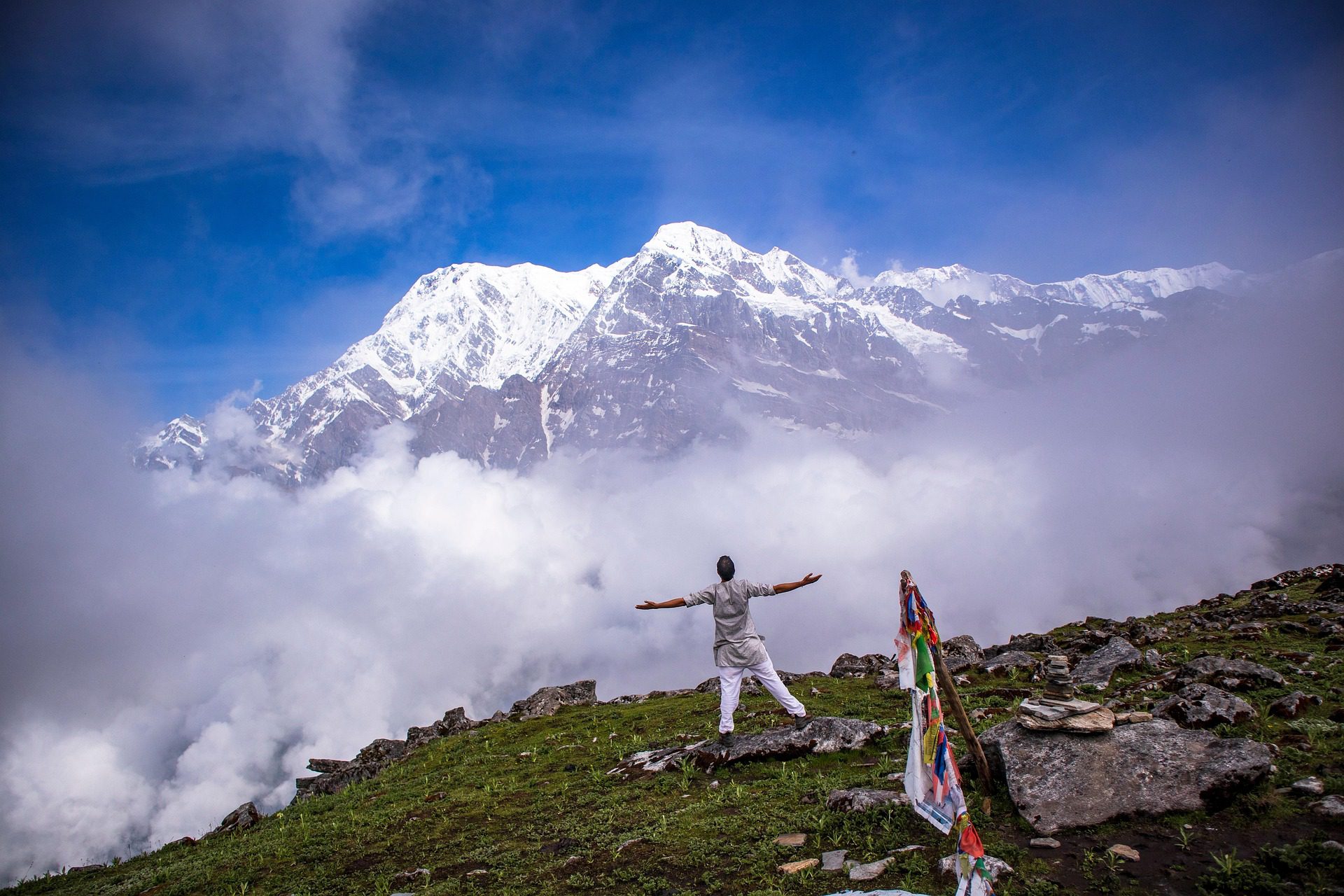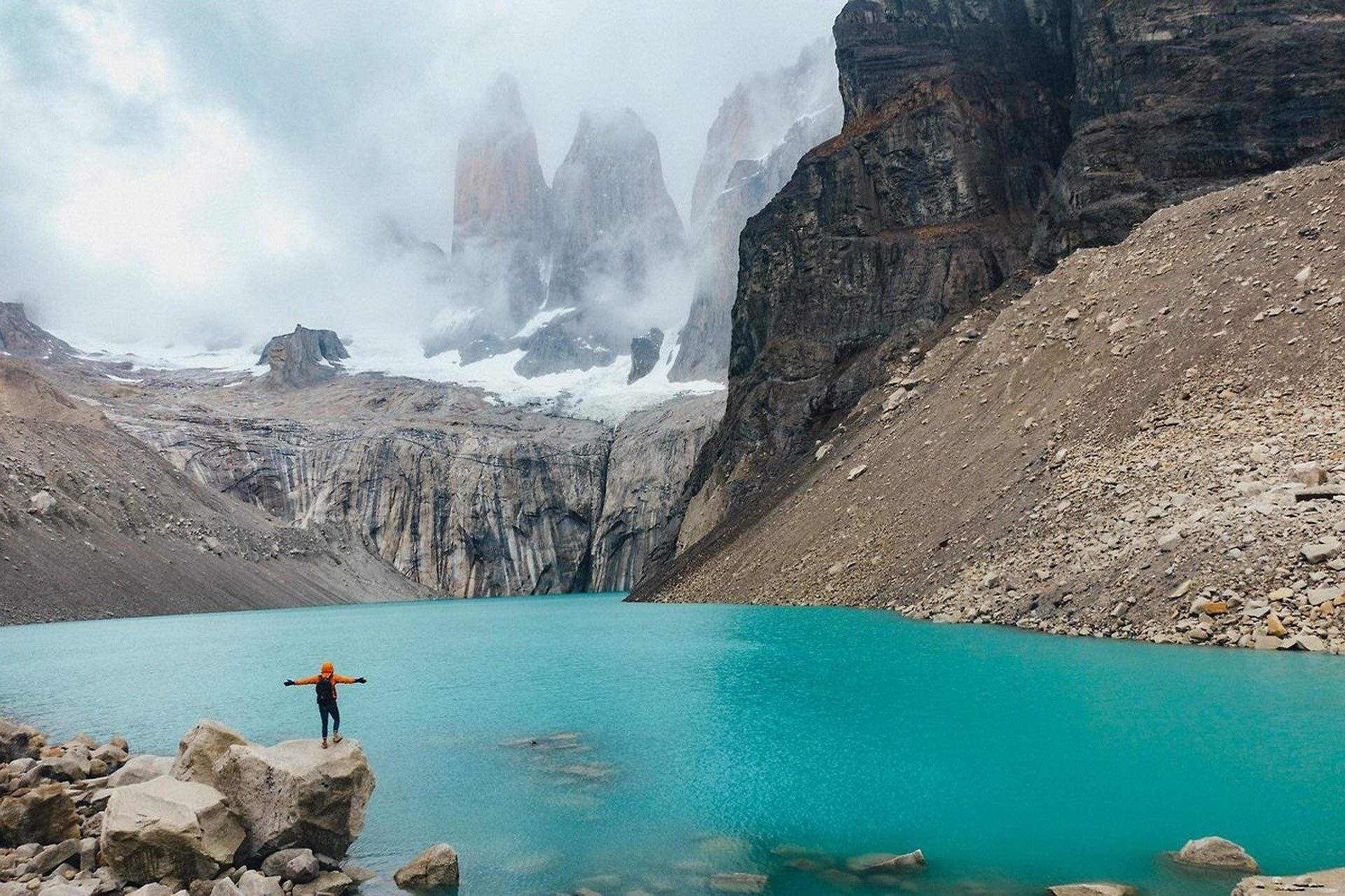Living A Fantasy In The Fakarava Atoll
Diving in Fakarava
Like Rangiroa, Fakarava is a favorite spot for divers in French Polynesia. I met Ariane & Matias from Dive Spirit Fakarava for a few dives in the legendary Garuae Pass, the largest in French Polynesia.
This was by far, the best diving in the South Pacific on my part. Before we ‘dive in’, here’s a video with the best moments from the dives in Fakarava.
Our first dive was a nice and easy one along the Ohotu Cliff. The magic starts as soon as you hit the blue water. You’re cruising along a beautiful coral garden, unlike anything I’ve ever seen before. Visibility? A cool 30-40 meters. The coral? These came in all shapes, sizes, and colors – so well preserved and so full of life.
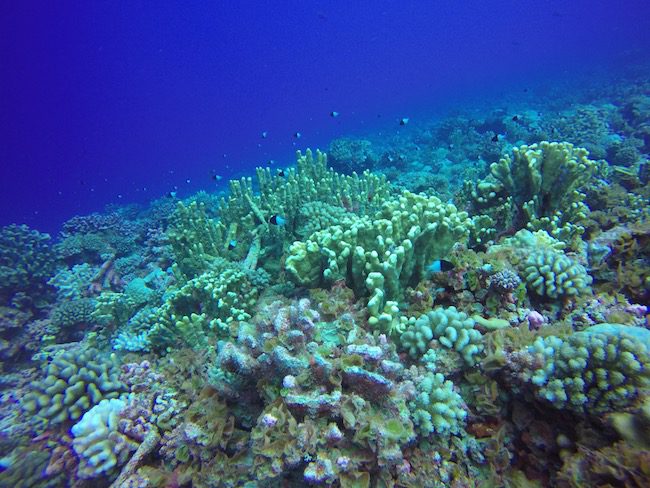
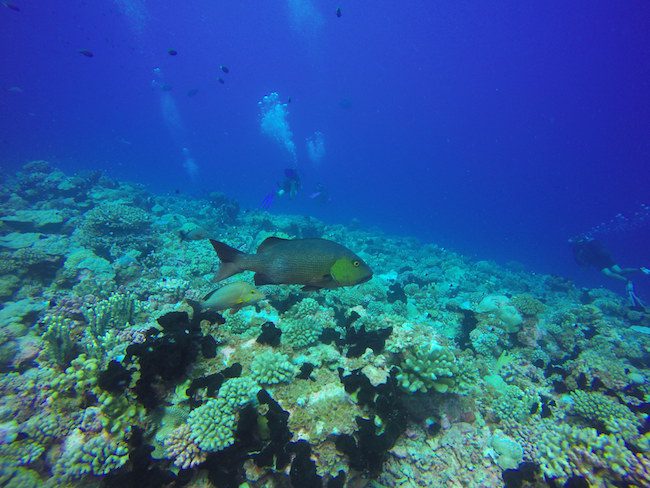
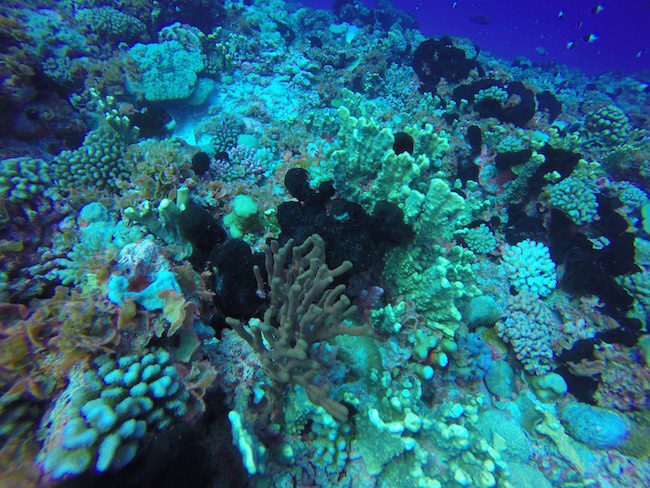
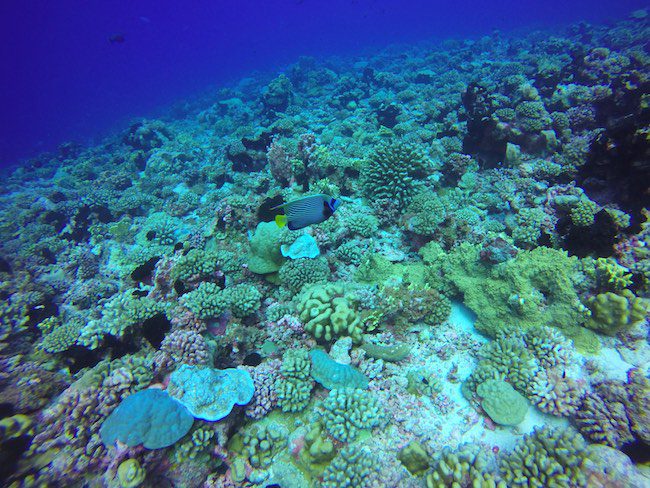
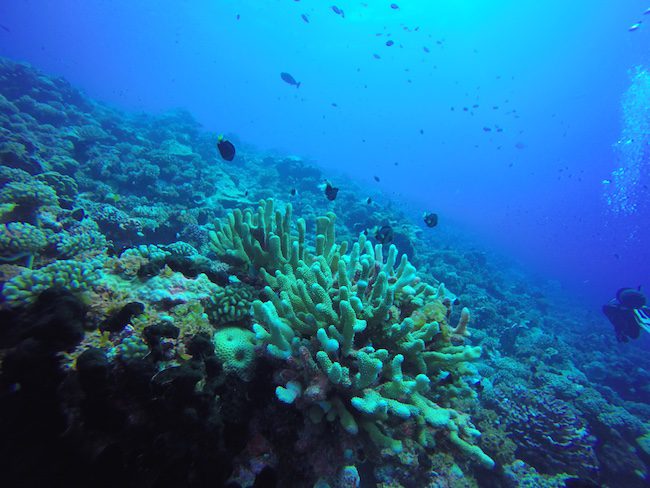
Especially magnificent are the yellow corals, which seem to bloom like flowers rising towards the tropical sun. When you dare to peek into the blue, walls of sharks appear – patrolling the reef like a pack of sheriffs or hunters scouting for a good spot to catch tonight’s dinner.
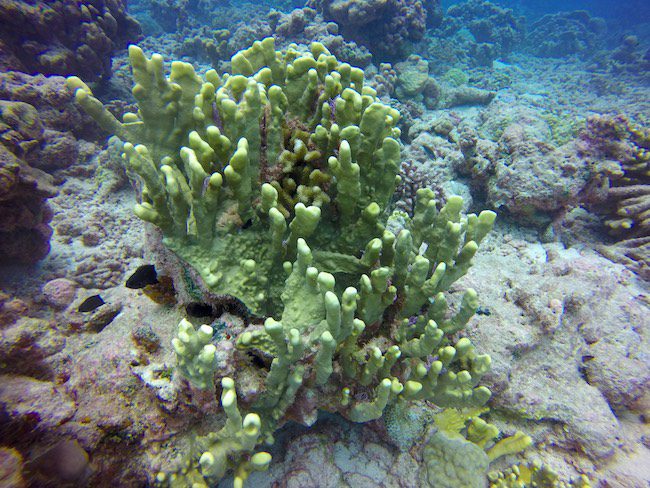
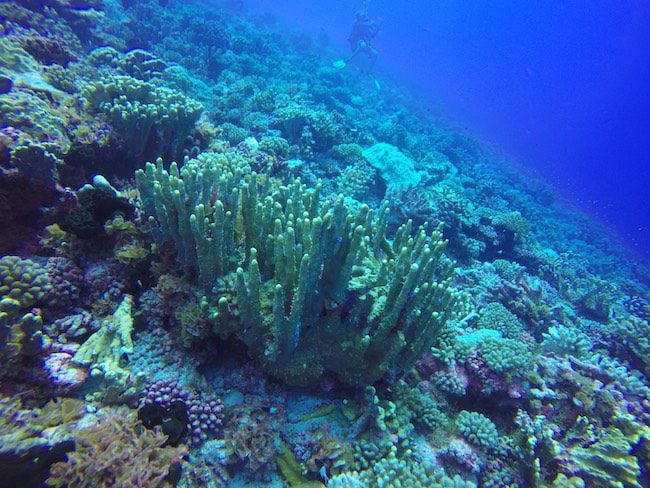
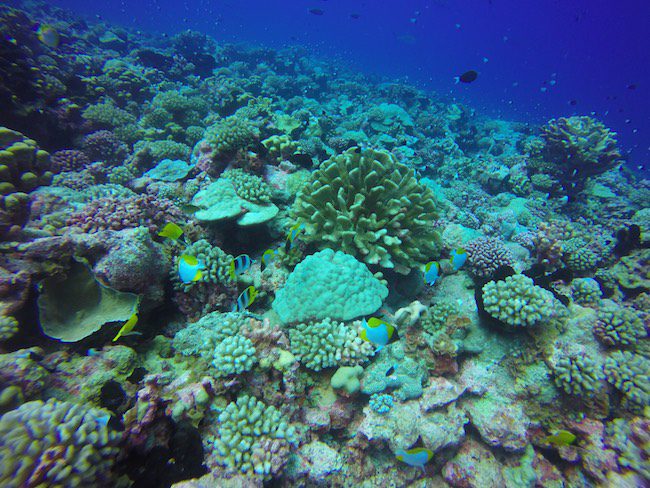
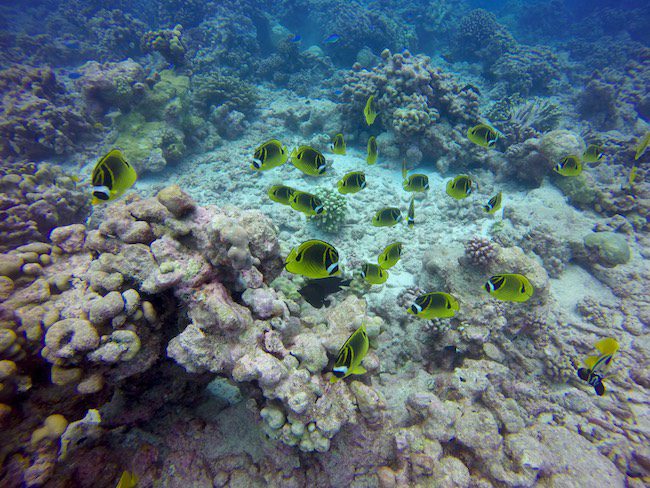
What an amazing first dive in Fakarava. Unlike in Rangiroa, diving in Fakarava is never disappointing. Even you aren’t lucky enough to see a hammerhead shark or dolphin, you’ll always have the pristine reef, even more, impressive than that of Ofu Beach in American Samoa. Matias explained that the reef in Fakarava is in excellent shape for a few reasons: a tiny human population = less pollution, the conservation efforts of the UNESCO Biosphere Reserve, and the fact that the lagoon pass does not face the prevailing winds – allowing the coral to grow without much resistance.
Look out for ‘surprises’
For our next dives, we got really lucky. It was slack tide, which is the best time to dive out here. It’s when the current begins to pull in the direction of the lagoon, rather than out towards the ocean. The fish love this type of condition and Matias told us to keep our eyes open for ‘surprises’.
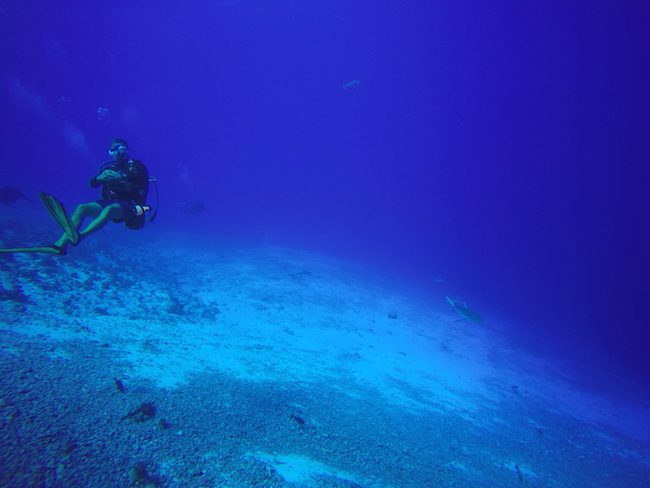
Right off the bat, we spotted a massive school of goatfish. There were thousands of them swimming in perfect harmony, and they didn’t seem to care much for us. You could just swim right through them and that’s exactly what we did. Unbelievable!
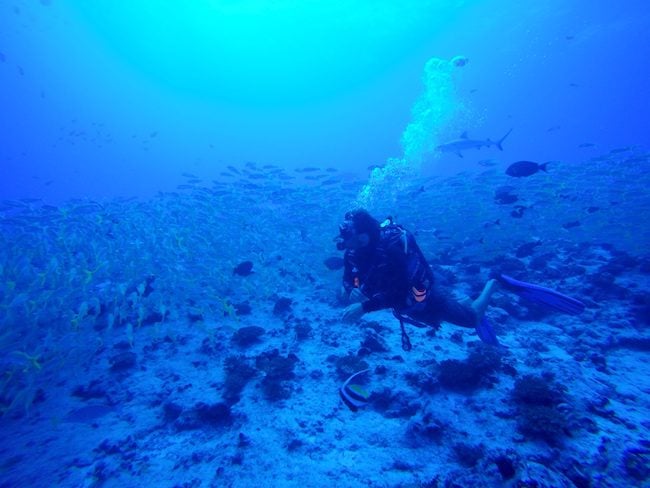
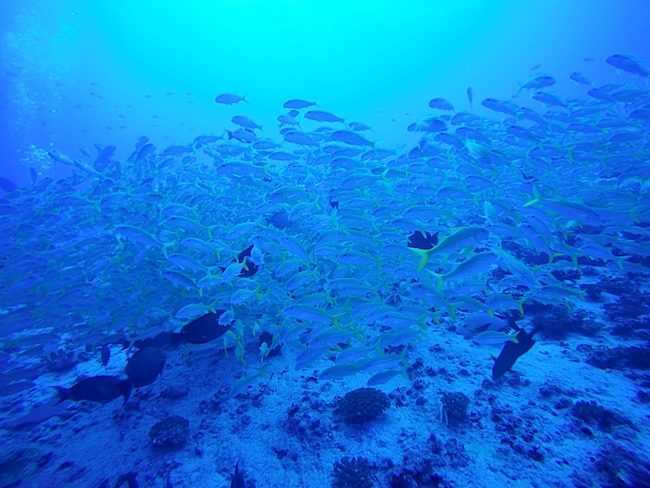
We continued out into the blue until reaching a depth of 29 meters. From every possible angle, we were surrounded by sharks. Some were patrolling the bottom of the reef in large groups, and some were much closer to the surface, scouting or doing God knows what. There were about 200 sharks around us at one point! Walls and walls of sharks – I’ll never forget this spectacle.
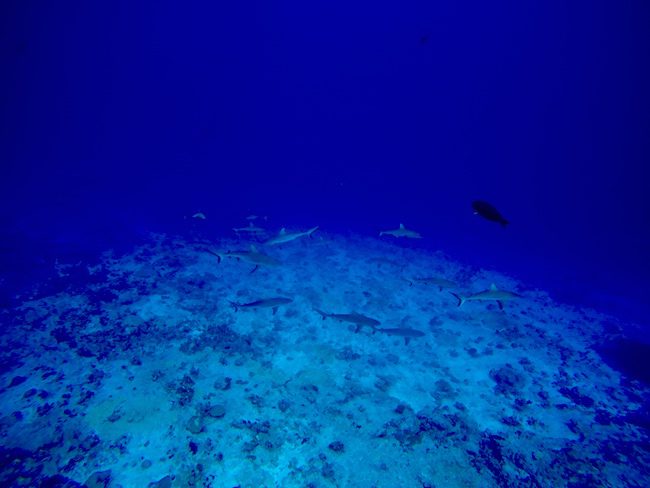
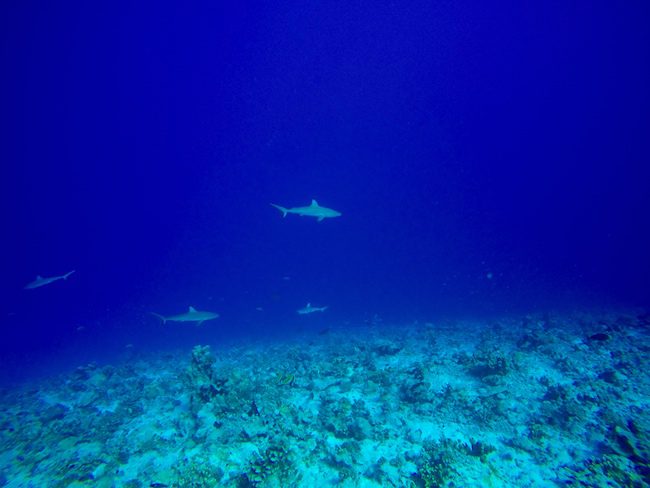
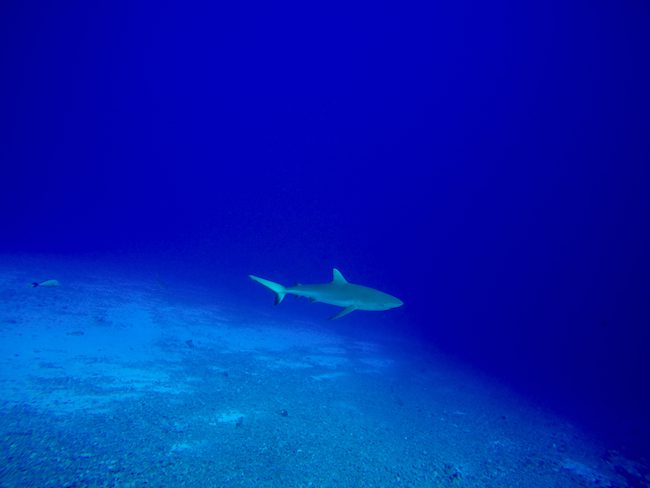
Moving along with the slack current, we began drifting into the lagoon. You could easily feel the point where the relatively cold water of the ocean was mixing with the warm water of the lagoon. We rode the current and began to rapidly drift into the lagoon.
We cruised by canyons and small chasms before reaching what’s known as the Alibaba Cave. Why is it called that? Well, that’s because the magic happens as soon as you arrive.
We were instructed to stay as low as possible so that we don’t get swept away by the current, look up and enjoy the show. Just above our heads, maybe 3-5 meters away, sharks were patrolling and small fish were trying to keep a safe distance.
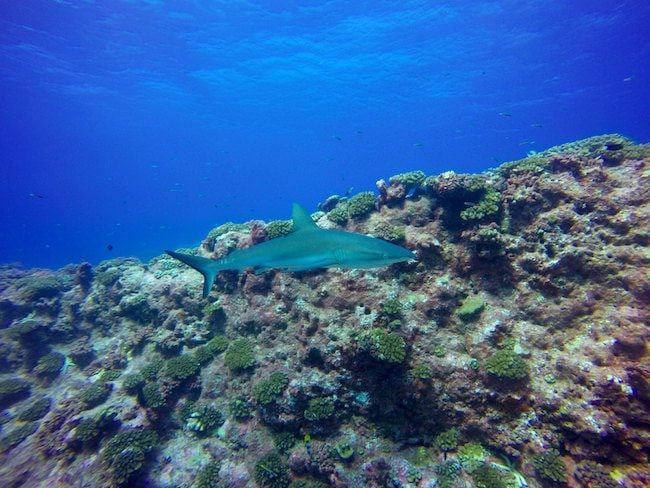
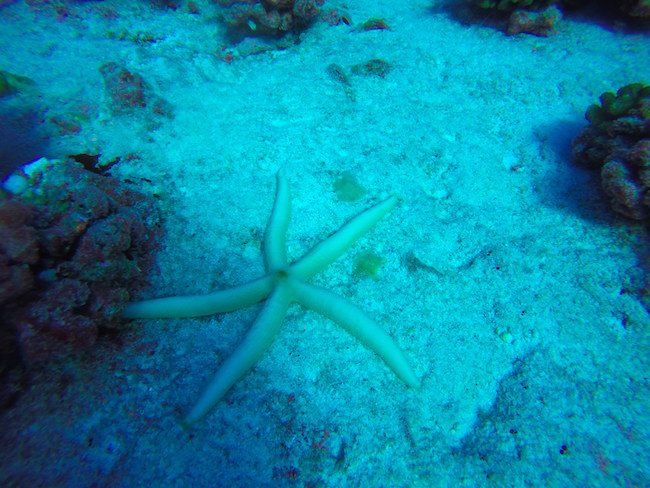
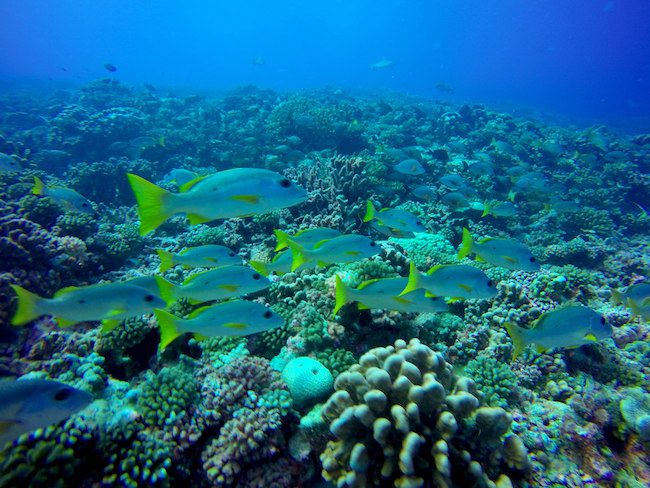
On this day, the best was kept for last. Sharks are fine and dandy, but we’ve seen those already. What about a giant marlin? Never seen that before. Just before we started our safety stop, a big one was gently swimming just above us, complete with a giant spear sticking out of its head. To see the marlin, check out the video just a few paragraphs above.
Like an astronaut in space
The last day of scuba diving in Fakarava would also be the last on my trip. And it was the best one. It was back to the Ohotu Cliff but this time, we would attempt to finish the dive off inside the lagoon. There was no guarantee though because the current was changing, and we were warned that it might be a bit rough on the re-entry. It sounds like an adventure to me!
The reef was as spectacular as ever, with the delicate reef fish swimming in harmony with the sharks. It was amazing to see how the fish managed to almost remain completely still, despite the strong current that was forcing us to grab onto the coral so we don’t get swept away.
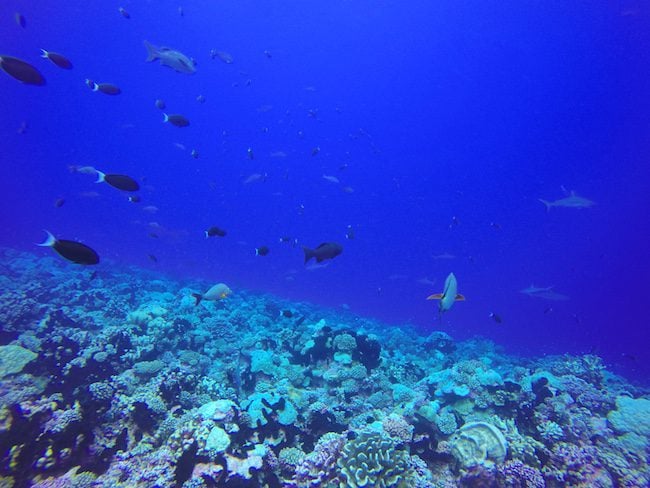
We then let go of the coral and began to drift into the lagoon. We were going so fast. I mean super fast! It was like standing on the roof of a bullet train or flying like an astronaut in space. All you had to do was extend your arms and legs and enjoy the ride. What a feeling!
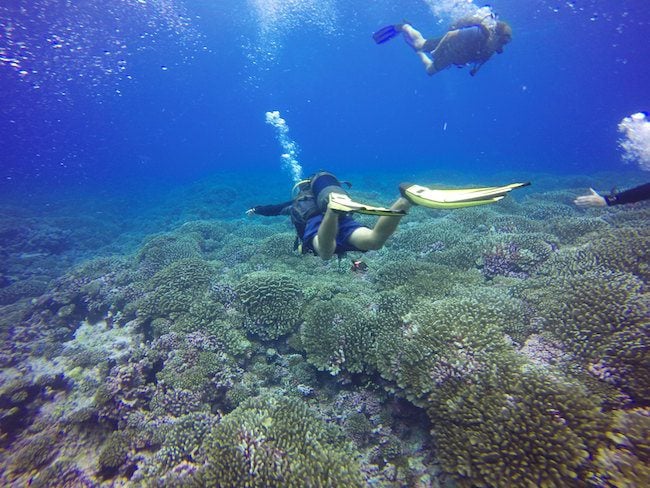
As the current weakened inside the lagoon, we found ourselves once again on the floor of some canyon. Thank God Matias knows his navigation because moments later we found a small cave that was just full of fish and one giant nurse shark! It was afternoon, so I guess the guys were looking for a calm place to take a nap.
I saw a nurse shark napping in a cave back in Moorea, but in this case, the shark had a lot of extra company and just didn’t seem to mind. I guess our bubbles and adrenaline woke up the beast because after a few minutes it woke up and left the cave. As it exited the cave, we saw a small flounder swimming like a pancake on its side, so well camouflaged to match the colors of the ocean floor. Such a weird creature. You can see this guy, the shark and loads more in the video just above.
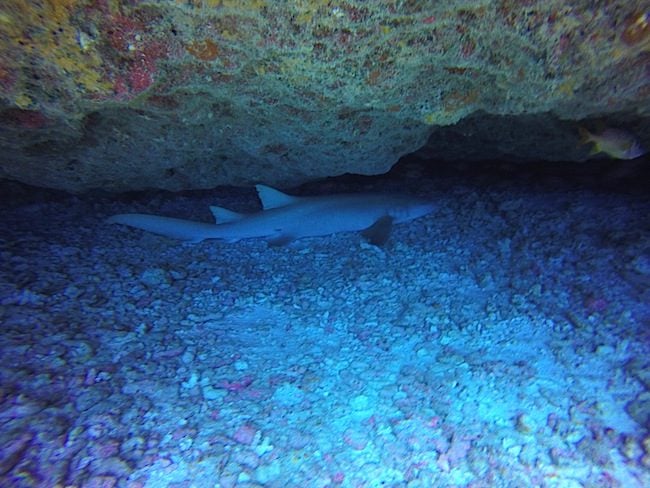
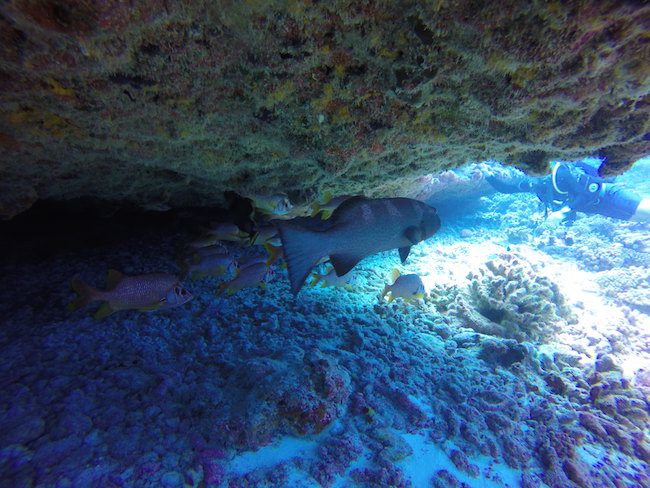
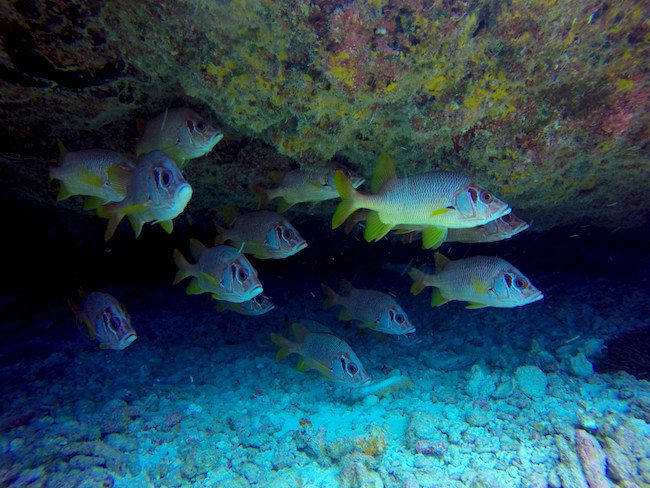
What a grand way to finish the diving chapter of my trip. Diving in the Tuamotu Archipelago of French Polynesia was definitely the most impressive in all of the South Pacific. And best of all, I didn’t find the hardcore ‘dive freaks’ that were everywhere in Rangiroa.
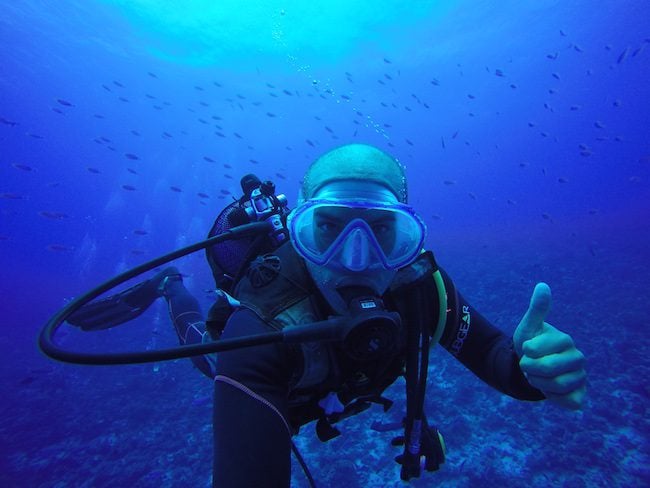
Pink sand? Are you kidding?
My week in Fakarava was nearing its end and it was a rainy Sunday morning. Instead of just staying in bed, I headed to church to see what the locals were up to. After a few days on the island, people look familiar and you’re bound to get quite a few ‘hellos’ as you’re walking through town.
The Catholic church is beautiful from the outside as we’ve already seen, but it’s super cute from the inside as well. Check out the decorative lighting fixtures, made completely from local shells.
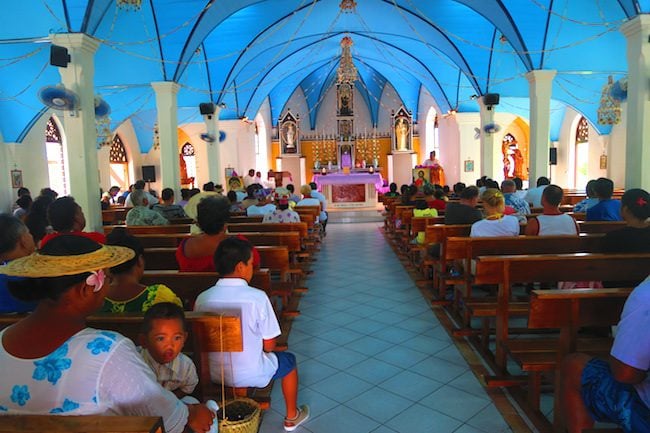
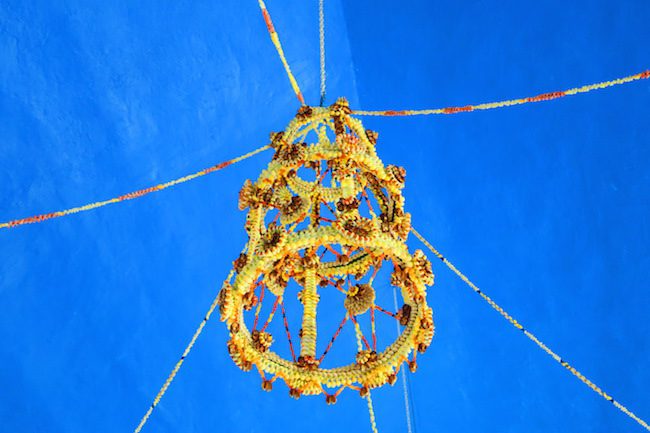
The service is as colorful as in all South Pacific churches, with the tunes already quite familiar to me. You don’t have to be a believer to enjoy church in this part of the world. It’s a great way to see how the community functions, and in Fakarava, they end the service with a beautiful gesture. As the priest chants the final prayer, locals hold hands and pray together, finishing off with a kiss on each cheek to kick off their Sunday snooze.
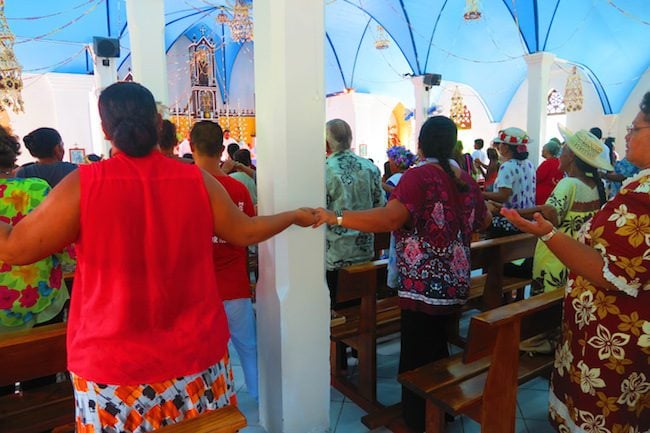
Though I prayed for good weather for my last day in Fakarava, I guess someone had better luck praying for some rain. It was a miserable Monday, but I just had to see the famous pink sand beach.
I joined a boat tour and 90 minutes later, we made it to the other lagoon pass – Tumakohua Pass. This is another prime spot for diving but requires a lot of effort to get to.
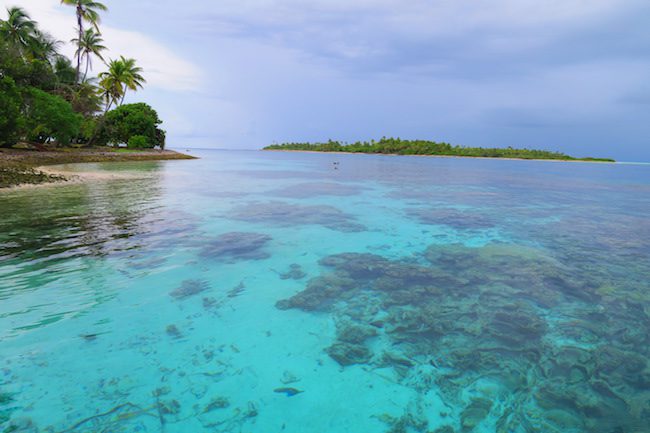
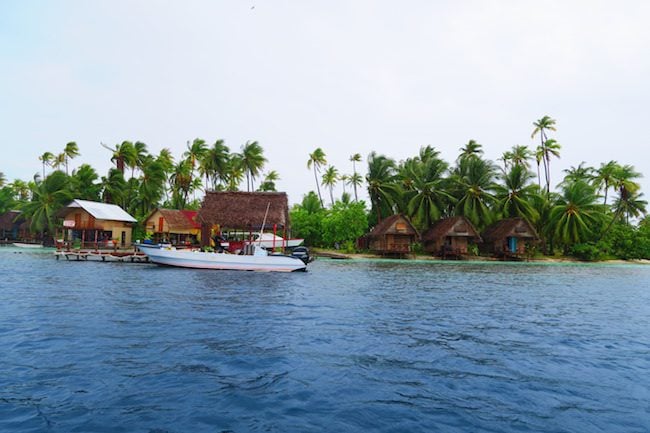
Believe it or not, there’s a small village out here called Tetamanu. It used to be a happening place many years ago until Rotoava took over as the main village and port. Captain Geoffrey and his assistant Temio anchored the boat by the village and we went for a swim and some snorkeling as they prepared lunch. The sharks and giant napoleon fish knew the drill, assuming positions for the leftovers later to come.
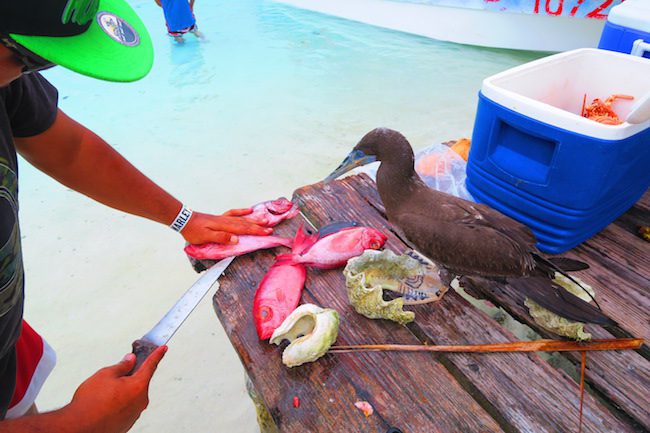
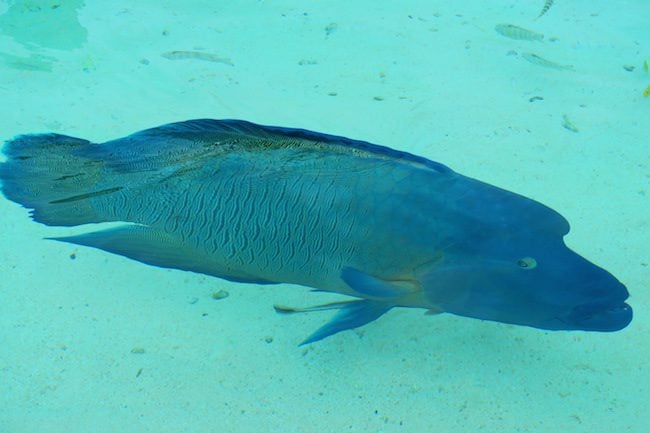
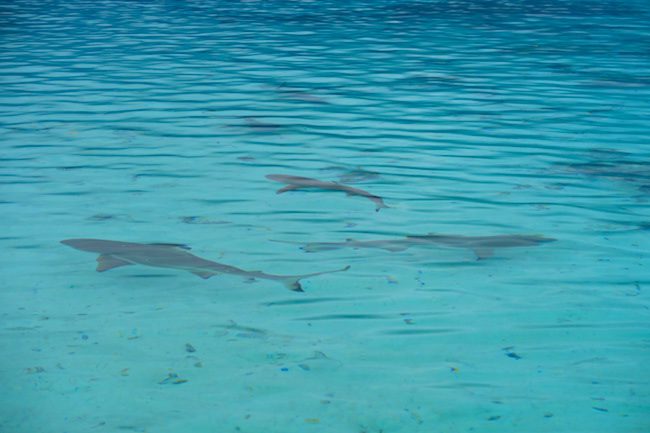
As lunch was on the grill, we went for a village tour. You can’t really call Tetamanu a village these days, with only four families living here. They rely on solar power, with each house storing electricity in batteries that can last for just a few cloudy days.
Tetamanu has one grassy street, no shops, a couple of pensions for the divers, and of course a church – built in 1874 from coral rock. Oh, the village does also have an abandoned school and believe it or not, a small former prison.
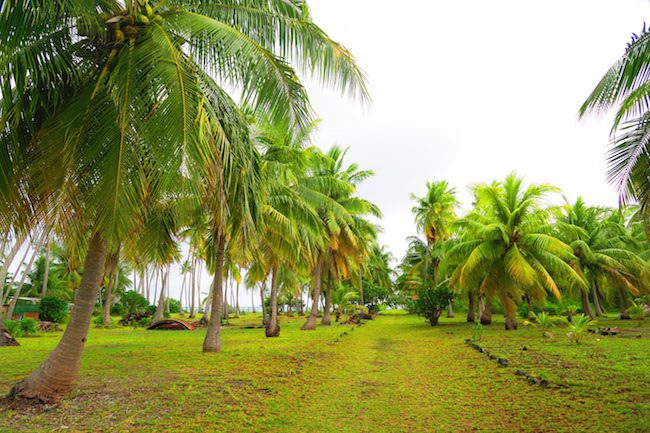
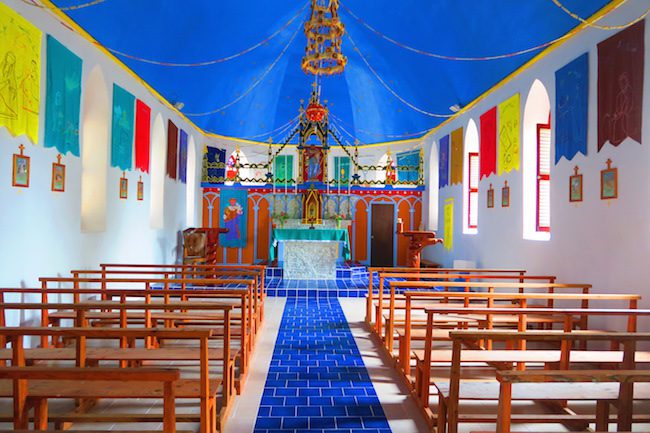
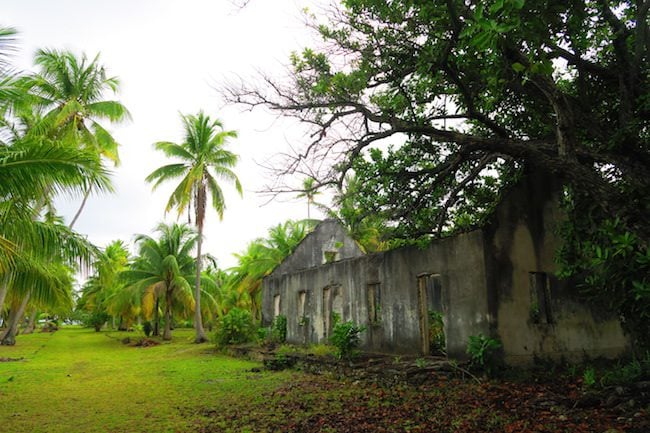
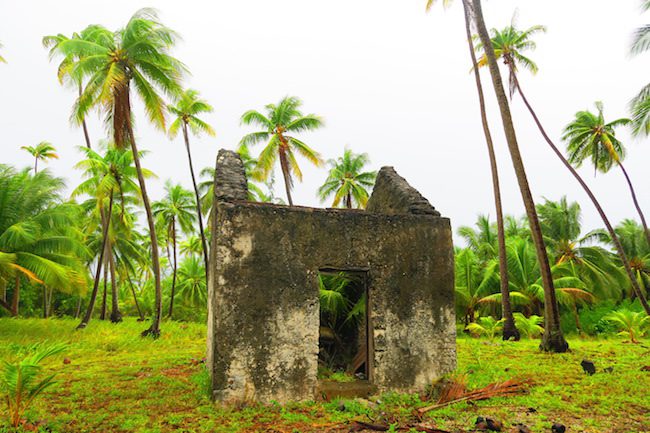
As we got back from the village tour, the skies opened up and it was the first time in the South Pacific that I actually felt cold. Thank God there’s lunch to keep our thoughts elsewhere.
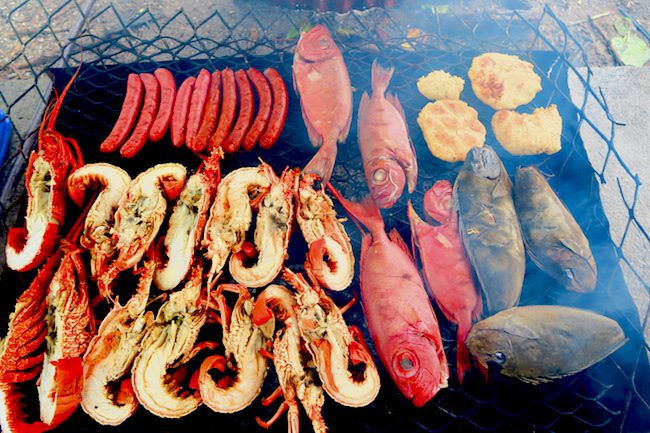
On the long ride back to Rotoava, we stopped at the pink sand beach. With the bad weather, Captain Geoffrey had to make a few difficult maneuvers to beach the boat on a sandbar in the middle of the lagoon that’s straight out of a postcard.
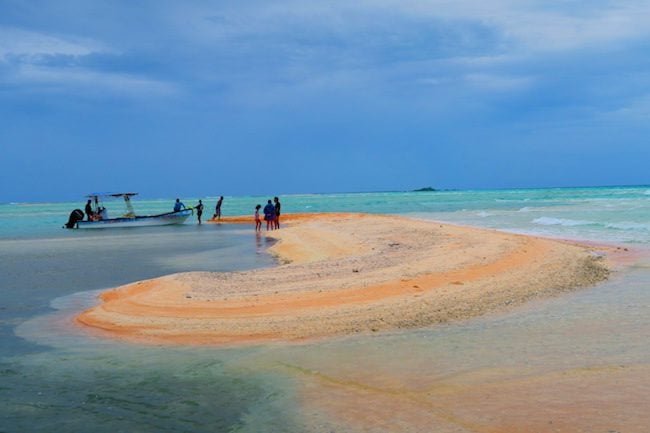
Voila! The pink sand. Well, it’s actually more orange than pink but I can see how it’s more of a pink when the sun is shining. The soft sand simply melts between your feet, sinking as you walk across the sandbar.
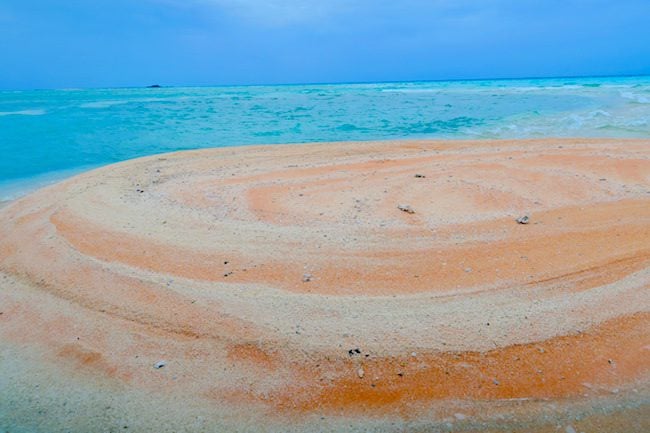
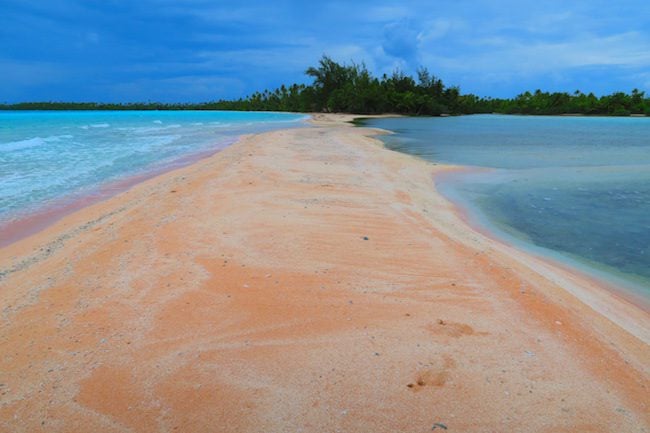
And that was it, an action-packed week I’ll never forget in the Fakarava Atoll had come to an end. As if listening to my inner feelings, the plane back to Tahiti was three hours late. And that was perfectly fine. At the airport, I met so many of the people that made my week. There were Matias and Ariane who were off to Tahiti to catch a flight to New Zealand, Stefan who was cycling back to the village from PK 9, the folks from the pink sand tour, and Titaina & Luis who were with me on the same flight. That’s what I love about island life. There aren’t too many people around, so you make friends very quickly. And there was Jacques of course, who waited patiently with us until the plane arrived. As I mentioned in the opening paragraph – Fakarava is a place you just don’t want to leave.
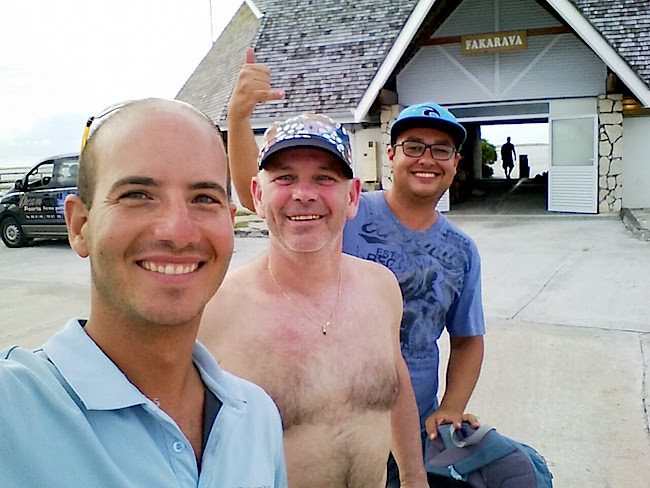
What’s next?
I’m off to the distant Marquesas Islands for the final part of my voyage. The Marquesas are remote, even by South Pacific standards and with island names like Hiva Oa and Nuku Hiva – it must be exotically wild. See you next week!
Heading off to French Polynesia? In-depth island guides to all 5 archipelagos await you, including sample itineraries and essential travel tips & tricks.
Tahiti, Tailor Made!
The Islands of Tahiti are among the last places to be colonized by mankind, 118 islands, each with its unique personality.
Get expert advice and assistance with planning your trip to the destination where tropical dreams come true!
